There are many reasons for visiting a place: Culture, architecture, leisure, gastronomy and... football? Well, yes, it might not be the best known of reasons, but the fact is that you can visit bigger and smaller places related to this, the world's most popular sport. In Spain, for example, they have football stadiums that are so exceptional that they are well worth a visit, even if there is no match on. They are the smallest, the largest, the oldest, the most modern... and the noisiest! (This isn't a ranking but a selection...)
1. El Molinón, the oldest (Gijón)
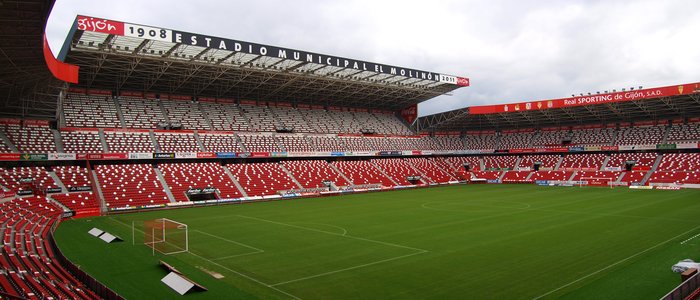
Although its team, Sporting de Gijón, is currently in the second division, the stadium can boast of one thing that makes it unique: it is the oldest football stadium in Spain (building began in 1908). It is also fair to say that the oldest football field in Spain is El Rubial, home to Águilas C.F., although the pitch itself does not meet the minimum measurements set by the UEFA. If you go to the Sporting de Gijón stadium, you can also take a walk through the Cimadevilla district and enjoy some spectacular views of the southern waters of the Bay of Biscay.
2. San Mamés, the newest (Bilbao)
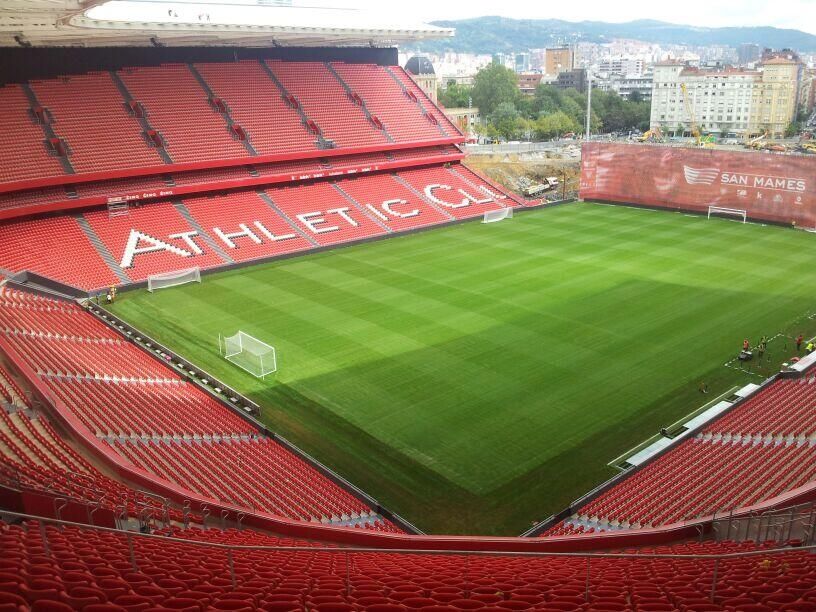
Construction of the former stadium of Athletic Club de Bilbao began in 1913 and it earned itself the nickname 'the Cathedral of football'. A hundred years later, the history of the club continues in this new building, which is outstanding, in particular, for the proximity of the stands to the pitch. It enables one to experience matches to the full. Coming to see this stadium is a good excuse to wander around Bilbao Old Town, comprising the famous Siete Calles (Seven Streets), an ensemble of urban architecture which is an official historical and Artistic Monument. There you can see impressive facades and city mansion houses, as well as a wide range of shops. Alternatively, the hundred-year-old Bizkaia Bridge will leave you gaping in wonder. It was the first metal shuttle in the world and it looks almost like a sculpture suspended 61 metres above the estuary.
3. Vallecas Stadium, the smallest (Madrid)
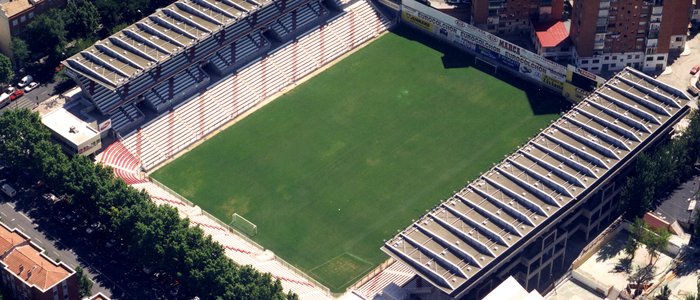
With a maximum seating capacity of 14,708, it is the smallest stadium in the first division. Indeed, on the site on which it stands (the one which housed the old stadium) space was so restricted that only three stands were built; instead of the fourth, there is a small wall. On this side, the people living in the nearby buildings take advantage to watch the matches without going into the stadium. Ten minutes away by underground we come to Atocha Station. Inside a surprise awaits us - an impressive tropical garden with thousands of plants of up to 260 different species, including palm trees measuring several metres high.
4. Manuel Martínez Valero, the biggest pitch (Elche)
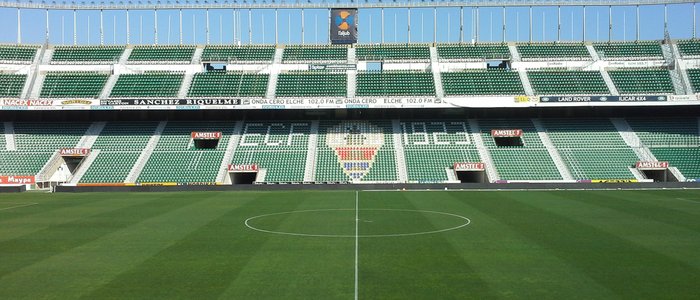
Like Osasuna, Elche has also dropped down into the second divisions on a few occasions. However, it has the honour of being the club with the biggest pitch in the whole of the Spanish league. It measures 108x70 metres, when the size recommended by FIFA is 105x68 m. A visit to this stadium is a great idea for those who love the beach, because Elche has a large infrastructure designed for holidaymakers. The city has 9 km of coastline. Here you can also see the biggest palm grove in Europe, with almost 200,000 trees. If travelling with the family, the youngsters will be fascinated by the city's Palaeontology Museum, with over 1,200 reconstructions and fossils, the majority coming from sites in the neighbouring towns. In the gallery, moreover, they also organise all kinds of workshops, where children have a great time.
5. El Sadar, the noisiest (Pamplona)
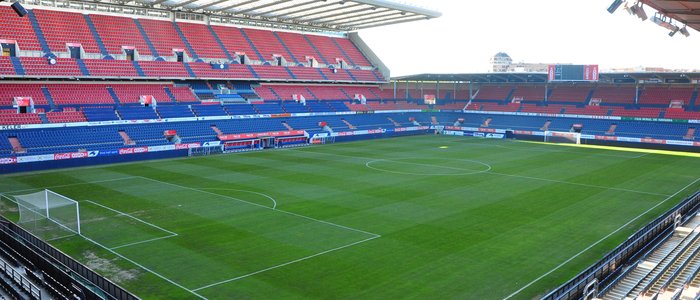
The fans of Club Atlético Osasuna are the loudest when cheering on their team. That was at least the case in the match against Real Madrid in 2009. According to the website TeInteresa, the noise in the stadium reached 115.7 decibels, the maximum ever recorded. Before going to a match here, you could fit in a visit to Pamplona's green lung, la Ciudadela. It is a huge park, created around Pamplona's defence complex, and is considered one of the best conserved examples of military architecture in mainland Spain. Strolling around this site, not only will you have the chance to breathe clean air but also to take in the magnificent views of the city and the walls surrounding it.
6. Camp Nou, the most frequently visited and the largest (Barcelona)
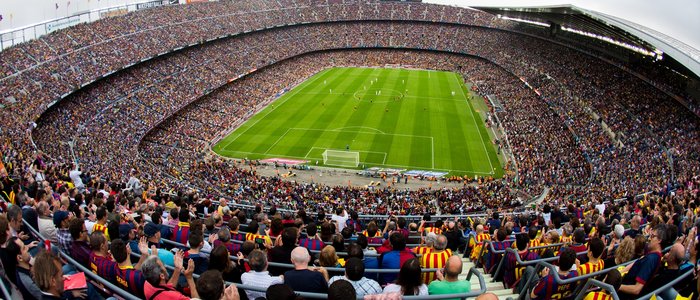
Fervent Barça fans from all over the world have made this stadium the most visited in Spain. Indeed, its museum is the most frequently visited in Catalonia, ahead of the Picasso Museum in Barcelona and Dalí's Theatre-Museum in Figueres. What's more, the stadium seats up to 99,354 people, the largest capacity of any in Spain. Near the stadium, (4 metro stops away) we have Plaza de España, where, at the weekend, you can see the son et lumiere show of the Montjuïc fountains. Here we have two good options for obtaining a scenic view of the city. The first is in this very square, on the terrace roof of the shopping centre built on the site of the former Las Arenas bullring. The second is on the top of Montjuïc mountain (the trip up, on foot or on the funicular railway, is well worth the effort).
7. Riazor, goals on the sea shore (A Coruña)
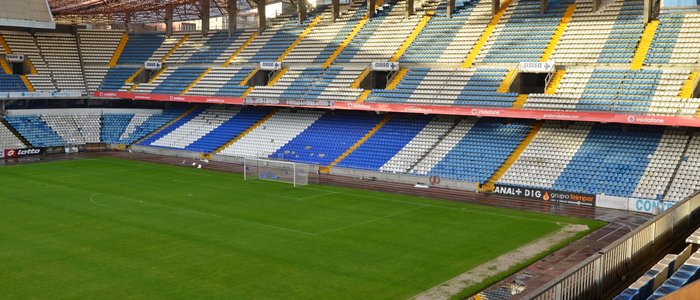
A little over 200 metres separate the stadium of Real Club Deportivo de La Coruña from the Atlantic Ocean. Here, goals are accompanied by a sea breeze. The stadium can seat 33,000 spectators and had the privilege of being one of the venues for the 1982 World Cup. And either before or after the match, you cannot miss the opportunity of going to the city's seaside promenade, which runs for over 13 kilometres from the castle of San Antón to the Portiño. If you still feel like walking, it is almost compulsory to get to the Tower of Hercules, the oldest lighthouse in operation in the world.
8. Santiago Bernabéu, coming to the end of its days (Madrid)
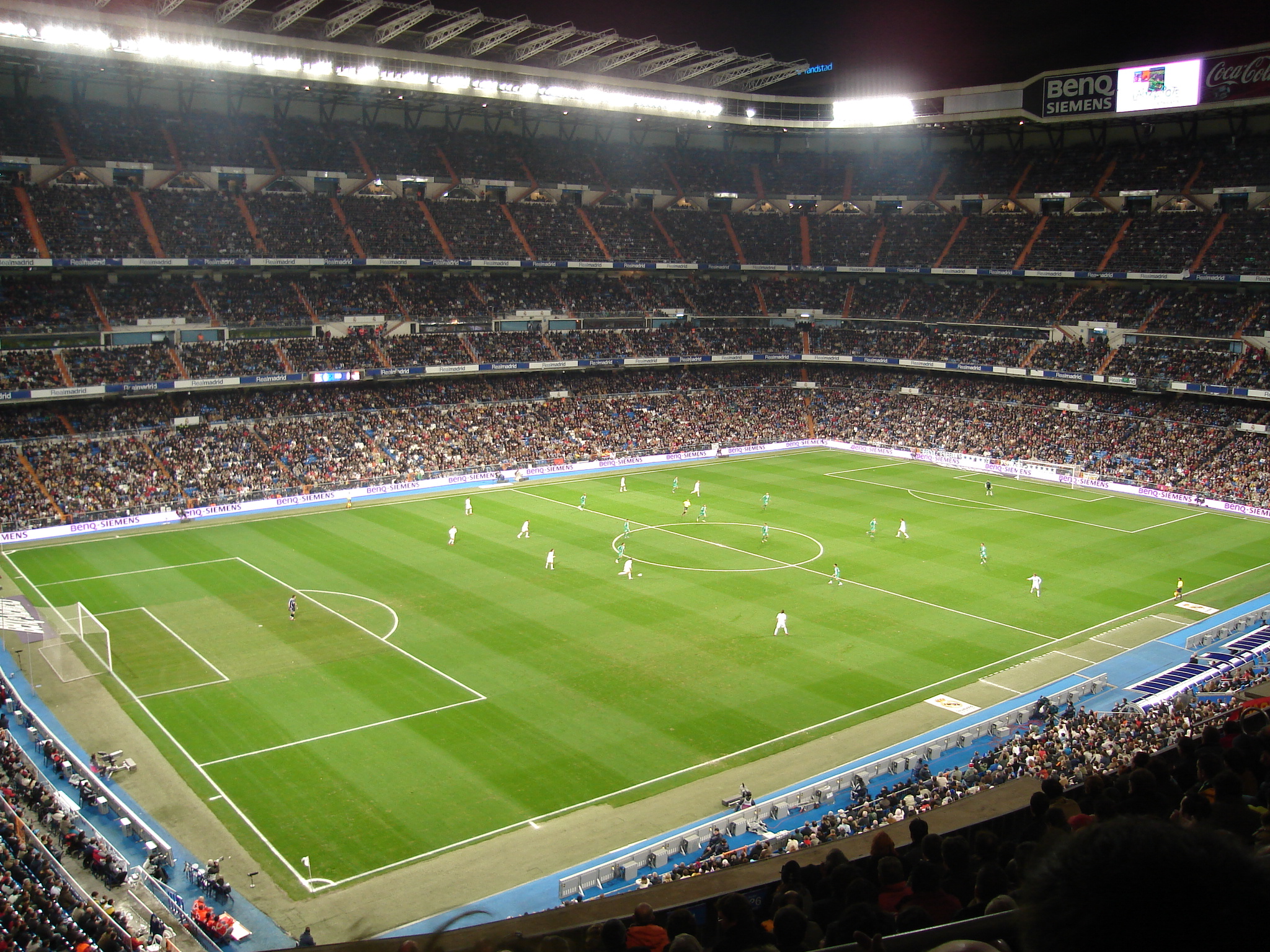
There is little time left for you to enjoy the Real Madrid stadium as we know it today, because there is an ambitious project to renovate waiting for the green light. It is expected that in the 2017 season the Santiago Bernabéu stadium will have a totally renovated aspect. Whether you visit the stadium before or after it is remodelled, you will have the opportunity of visiting one of Madrid's most famous districts, the Paseo de la Castellana, where it is located. If you like, you can walk right down to Plaza de Cibeles, although it will take you almost an hour. En route, you will pass the Plaza de Colón and the National Library, amongst other landmarks. If you prefer to go in the opposite direction, and also after a long walk, we will reach the Plaza de Castilla, where you will see the city's famous leaning towers, the Kio Towers, and the skyscrapers which stand out on the Madrid skyline (known as the four towers).
9. Gran Canaria, on the isla bonita
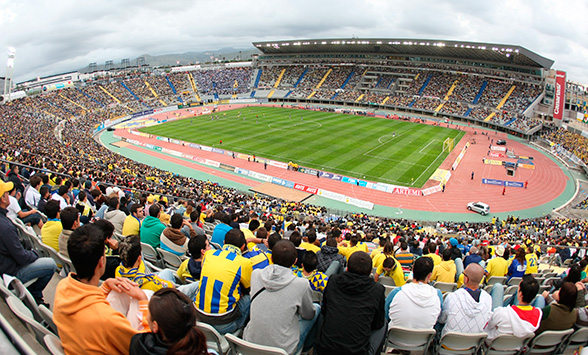
Unión Deportiva Las Palmas' home ground since 2003, it is the biggest stadium on any of the Spanish islands. It occupies almost 60,000 sq.m. and can seat 31,250 spectators. If you decide to visit it, you will find it hard to decide on just one place to devote your time before or after the match, because Las Palmas de Gran Canaria has a very extensive range of tourist amenities. In addition to getting to know its magnificent beaches, particularly worth a visit is la Vegueta, the district which founded the city. Its cobbled streets and houses in the traditional architectural style will make our stroll through the area a real delight. Another place to take a wander is the fishing quarter, San Cristóbal, where there is a vast range of gastronomy on offer, with the best fresh fish menus you could imagine. Here, moreover, you can see the Tower of San Pedro Mártir, a watchtower built in the 16th century.
10. Ipurua, a tiny giant (Gipuzkoa)
 12.59.54.png)
Eibar is probably one of the most modest teams to have ever gone up into Spain's top division. Hence, in the 2014/15 season, its stadium's 5,200 seats will be insufficient to host the thousands of spectators who will want to see their team playing the football league giants, like Real Madrid and Barça. If we go to a match in the Ipurua stadium, you will be able to breathe in the clean air of Eibar, a town in Gipuzkoa, located on the River Deva and surrounded by mountains. It is also recommended to visit the Sanctuary of the Virgin of Arrate, an emblematic place for the people from this small town. If you want to see the sea, you can travel the 31 kilometres that separate you from Zumaia, one of the most beautiful villages on the Gipuzkoa coast. In addition to visiting the old town, which still conserves its medieval layout, you can also admire its impressive cliffs.